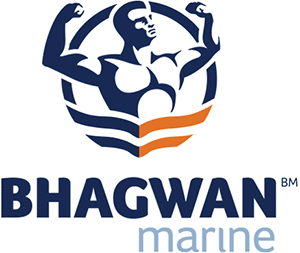Bhagwan G-Cylinder trial proves potential for savings at sea

A fuel saving above 20% has been achieved in a long-term test of a carbon nanotube device fitted to a Bhagwan Marine vessel.
The G-Cylinder, developed by an Australian Research & Development company, utilises carbon nanotube technology from Japan to enhance fuel combustibility, reduce engine wear, cut emissions and improve power delivery.
Fitted to the fuel line in a relatively simple, low cost procedure, the G-Cylinder conducts radiant heat from the engine room to stimulate the emission of far infrared radiation within the graphene and carbon nanotube. This infrared radiation excites the diesel fuel molecules, disentangling and dispersing them so that they are optimised for combustion
University of Western Australia

¼ throttle tests with the G-cylinder show a noticeable decrease in specific fuel consumption.
December 10th 2004.
1966 Holden 161 “red” engine, 2,640cc
Test 4: 0.456 kg/kWh ¼ throttle, with G-cylinder
Test 5: 0.549 kg/kWh ¼ throttle, no G-cylinder
The results from test 4 (¼ throttle with the g-cylinder) gave a 17% reduction in specific fuel consumption in comparison to test 5 (¼ throttle no g-cylinder)
The tests conducted at UWA show the G-cylinder achieving 17% improved fuel consumption. The short 15 minute tests do not conclusively evaluate the G-cylinder. Results indicate and reinforce that this could be the worlds most advanced superior fuel saving device.
Japanese Vehicle Certification Institution

The reductions in carbon monoxide and residual hydrocarbons are confirmation that the combustion efficiency has improved.
| CO (g/km) Carbon monoxide | HC (g/km) Hydrocarbon | Nox (g/km) Nitrogen oxides | CO2 (g/km) Carbon dioxide | Mileage (km/l) 10-15 Mode | |
| Without G-Cylinder | 1.199 | 0.291 | 0.761 | 288.0 | 9.00 |
| 9.00 | 1.001 | 0.106 | 0.712 | 264.9 | 9.90 |
| Fluctuation | −0.198 | −0.185 | −0.049 | −23.1 | +0.90 |
| Ratio | −16.51% | −63.57% | −6.43% | −8.02% | +10.0% |
16th 12 2002 1990 NISSAN Q-WBYD21 2600cc Diesel, Manual T/M Diesel 10-15 Mode * Japanese Vehicle Certification Institution
Real World Fuel Saving Results on Japanese Ships using PCM devices
| Name | Prefecture | Work | Weight | Horsepower | Engine | Saving(%) | PCM Model | Summary |
| Tonbolo | Kagoshima | Run by fishpond | 5 tonne | 300hp | 6400cc Yammar | 38.7% | 1×620 | 3mths data before installing PCM – 1100L/1350L/1550L 3mths av. 4000L 3mths data after installing PCM – 830L/710L/900L 3mths av. 2450L |
| Lopez | Okinawa | Diving | 5 tonne | 329hp | 6000cc Yammar | 22.4% | 1x PCM620 | More than 22.4% more efficient after installing PCM in same condition of without PCM |
| The fifth Sho-tomaru | Wakayama | Fishing | 8 tonne | 700hp | 13400 Isuzu | 35% | 1x PCM620 | without PCM—850rpm 11.5L/h, with PCM ——-800rpm 8.7L/h |
| Ken-ei maru | Kouchi | Fishing | 20 tonne | 730 | 18000 Yammar | 30% | 2x PCM620 | Without PCM—1000L Diesel Approx. 40- 50L/h in 3days work of 6-8h/day, With PCM—1000L Diesel, approx. 30-35L/h 4days work, also reduced the noise and the colour of exhaust gas. |